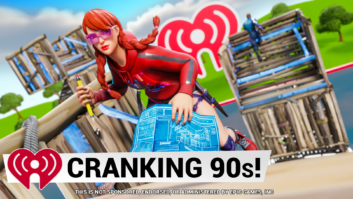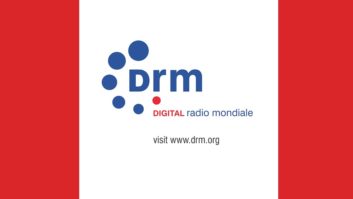The dizzying array of new delivery platforms and networks today offers both challenges and opportunities aplenty for media distribution companies. We’ll try to help with a concise summary of possibilities here.

Applications that aggregate terrestrial radio broadcast streams for mobile broadband listening are proliferating. They include WunderRadio, Radiolicious and iheartradio. Before proceeding down the path to new platforms, however, let’s get one thing straight: Back when there wasn’t much alternative, radio listeners would put up with a lot. That’s how we got to an environment so dense with commercials, and so light on variety. But in a world of far more media choices, that kind of now-typical radio fare goes against the popular grain, and will hurt broadcasters’ prospects if not remedied quickly.
This context is often missed in all the fuss over new delivery platforms. If radio’s content is out of favor, then just putting the same old stuff on a new device won’t make it any more successful. In fact, given the initial investments and cost models (i.e., pay per listener), taking that approach could quickly worsen radio’s state.
So if you’re not willing to develop new content and presentation styles for these new delivery systems, don’t bother.
Not just for PCs anymore

Clear Channel’s iheartradio site makes the point directly: ‘Your iPhone is Now a Radio.’ The first wave of Internet radio migration beyond the PC is represented by the growing number of portable, dedicated devices that imitate the clock- or table-radio form factor. This is not a new idea, having debuted in the late 1990s with the fondly remembered yet short-lived Kerbango product, but may now finally be coming of age.
In a few cases, these appliances have AM/FM tuners as well, but most are Internet-only receivers, generally with both Ethernet and WiFi connectivity. Tuning can be a challenge on these devices, but they do extend the reach of Internet radio to places it has never gone before.
This expansion of fixed Internet radio has great value for broadcasters, especially AM stations. Of course, the competition is almost infinitely greater on these products than on a regular radio, but this is where compelling content can still win the day — particularly in local markets.
Streaming goes mobile
By now, most stations have established a streaming presence on the Internet, and many are starting to see reasonable returns from new online advertising revenues there. Keeping that trend going is critically important.
Meanwhile, unless you’ve been under a rock for awhile, you’ll know that the new frontier is streaming to mobile broadband devices. Many millions of these connected devices are sold each year, but very few of them “connect” with broadcast radio. Reaching these users therefore requires taking the mobile broadband route.
The challenge here is that these mobile computing platforms are telecom devices first and computers second. Thus beyond their physical constraints, their functionality is limited by the wireless network operator through which they connect.
To allow these devices to be used for mobile radio, two elements have evolved, often conjoined. They are the streaming media “app” — the platform-specific application needed to conveniently run streaming media on mobile devices — and the stream aggregation portal, which provides a menu of many audio streams for the mobile user’s listening pleasure.

Internet radio listening in the U.S. continues to climb, with 2008’s estimated audience reaching 33 million. These values reflect those who reported listening to Internet radio at least once in the previous week. (Source: Arbitron/Edison Media Research) A number of these sites have been developed by pure Internet radio service providers (like Pandora and AOL), but a few focus on aggregation of terrestrial radio broadcasters’ streams, such as Radiolicious and Wunderradio. A few station groups have done this on their own, like Clear Channel (iHeartradio) and Greater Media. It takes a good bit of work, and lots of promotion, but the ability to stand alone on the listener’s platform at the app level could prove worthwhile.
Note that even the aggregators have aggregators here, with each of the platforms (Apple iPhone/iPod Touch, Google Android/T-Mobile G1, Microsoft Windows Mobile, Palm webOS, and no doubt more to come) providing its own “App Store” at which users of that device can download (usually for a small fee) any application developed — and approved by the manufacturer — for the platform. For example, at last count there were about a dozen different online mobile radio applications available for the Apple iPhone.
Perhaps the trickiest element of these aggregation processes (both for mobile and fixed Internet radio) is the need for stations to get listed in all the right places. Often these listings are free, but getting and keeping your station, its format descriptors and correct URL(s) on all of these lists is a complex, labor-intensive process.
Beyond real time
For both fixed and mobile platforms, some radio content lends itself to the on-demand listening that the Internet also provides. Podcasting is the most interesting vehicle here, especially for recurring series, since it inherently allows listeners to sign up once and then have successive episodes pushed to each listener’s PC (for listening on the PC or transfer to a handheld device).
Podcasts are easy to create, either from existing radio content as it ran on-air, or repurposed (additively or subtractively). Like streaming media, podcasts can also include other content types like photos, video and text. Segmentation can be added, as well, by which broadcasters insert “chapter” markers in the program.
More than audio

Internet radio appliances such as Sangean WFR-1 are on the market. (For reviews of this and other models, see the Product Evaluation section of radioworld.com.) Perhaps the most foreign element of new media to old-school radio is the social networking component. Yet radio has always been strong in creating virtual communities of its listeners. The only difference today is that now those listeners can also talk to each other by virtual means. What a great, totally winnable opportunity for radio to leverage. Get them talking about your station’s content, and spreading the buzz.
Platforms like blogs, Twitter and Facebook are most popular today, although there are plenty of others. Avoid having postings appear as if they are coming from a business, however — even if it’s a radio station. Far more successful are postings by a popular DJ, reporter, sportscaster or other on-air personality. The power of your air talent’s local celebrity can be well leveraged into this new domain if properly handled.
Setting up station fan pages on social networking sites, or even the station’s own Web site, can also help plug the station into this environment, but keeping the content current is absolutely critical. This doesn’t just mean a weekly refresh — Twitter literally has a minute-to-minute ethos.
Besides the obvious “word of Web2.0” value of using these tools for station promotion, monitoring of social network traffic by station staff can provide instant audience feedback. This allows a station to adapt its content to super-serve the target demographic, and be responsive to even ephemeral local trends.
Rust never sleeps
It is possible for radio to get hip again. In fact, the combination of on-air, online streaming, mobile broadband and social networking services available today offers unprecedented synergistic opportunities for broadcasters. All it takes is some open minds, some new media savvy and management’s commitment.
Radio has reinvented itself before, but never in its history has it needed to more than it does now.












